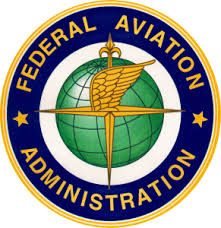
If the terms “Part 107” “Small UAS Rule” or even “FAA Reauthorization” have you confused, you’re not alone: so we’ve put together a short primer on what these references to federal drone law mean.
What is “Part 107”, and what is the “Small UAS Rule”?
“Part 107” refers to the proposed part 107 of Chapter 14 of the Code of Federal Regulations. This is the same thing as the proposed (it has not been published and is therefore a proposal only) Small UAS Rule; currently known in FAA-speak as the “Small UAS NPRM” or “Notice of Proposed Rulemaking.”
Part 107, or the Small UAS NPRM is designed to allow commercial drone use without a Section 333 Exemption. The proposed rule states that under certain conditions – with the drone in visual line of sight, in daylight, and under other conditions – a drone may be flown commercially without an airman’s certificate (that’s a pilot’s license to most of us -a license to fly a manned aircraft.)
There will still be regulation around commercial operations; the proposal says that commercial drone operators will need to take a test and comply with other certification requirements. However, as one of the primary barriers to entry to starting a drone business today is the need to have a licensed pilot on your payroll, the implementation of the Small UAS Rule could help the drone industry to expand exponentially.
A summary of the contents of Part 107 can be found on the FAA’s website here; the complete text can also be found there.
What does FAA Reauthorization have to do with it?
FAA Reauthorization is a separate issue. The FAA Reauthorization packages currently under debate in Congress are funding authorizations. The current FAA funding bill expires (after the recent extension) in July; so Congress needs to pass another one or risk the FAA being shut down. As the wording of the bill is argued, politicians have put in provisions and recommendations about how drone regulation should be handled. However, FAA Administrator Michael Huerta has said that he does not anticipate that the FAA Reauthorization package will affect the publication of the Small UAS Rule – even if some of the suggestions in the FAA Reauthorization package are in conflict with the rule.
FAA Reauthorization is in reality a tax bill; it allows the government to collect aviation taxes.
What exactly will be in Part 107?
We don’t know that. While we have the published text of the proposal, until the Small UAS Rule is actually published we can’t know exactly what it will contain in the final version. To illustrate this, see the FAA’s guidance to the recently formed Micro Drone Committee, or ARC:
The FAA informed the ARC that any recommendations regarding small UAS operations over people will be bound by the regulatory requirements in part 107 (commonly known as the “Small UAS NPRM” or “part 107”). Although the ARC was not aware of the contents of the small UAS final rule, it made assumptions about what these requirements will be based on the NPRM.
The FAA is not committing itself definitely to the contents of the final rule until publication.
When will we know what Part 107 contains?
We don’t know that either. The FAA has said repeatedly since missing the original deadline of September 30 that the Small UAS Rule will be published in “late spring” of 2016.
Will I be able to start a drone business as soon as the Small UAS Rule is published?
Sorry, that’s another thing we don’t know. While the FAA has said that the rule will be published in the late spring of 2016, it hasn’t officially confirmed an implementation timeline.
Miriam McNabb is the Editor-in-Chief of DRONELIFE and CEO of JobForDrones, a professional drone services marketplace, and a fascinated observer of the emerging drone industry and the regulatory environment for drones. Miriam has penned over 3,000 articles focused on the commercial drone space and is an international speaker and recognized figure in the industry. Miriam has a degree from the University of Chicago and over 20 years of experience in high tech sales and marketing for new technologies.
For drone industry consulting or writing, Email Miriam.
TWITTER:@spaldingbarker
Subscribe to DroneLife here.